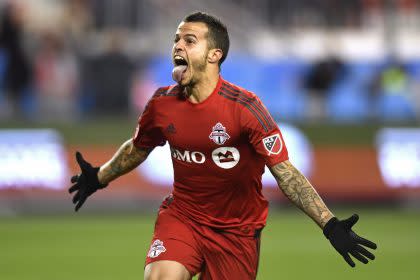Second MLS Cup in Toronto will show the league's evolution from the first

The final of Major League Soccer has come to Toronto before.
In 2010, it was a dreary affair. FC Dallas and the Colorado Rapids did not make for very compelling opponents, described at the time as a “David vs. David” contest – indeed, the final was decided by an extra-time own goal. The wind whipping off Lake Ontario made it bitterly cold. Television ratings were the worst in MLS Cup history. And half the stadium was empty because Toronto FC season ticket-holders abandoned their swath of seats in some protest or other.
[ MLS Cup: Live updates from Toronto | Match stats ]
In 2016, we should see something rather opposite. BMO Field, recently expanded from 22,000 to 31,000 seats, and temporarily built out to 36,000 for the playoffs, sold out in a mere three minutes after tickets went on sale to the general public. The home-town Toronto FC and Seattle Sounders FC, two of the most popular franchises in the league, are going for their first title after years of disappointing seasons – with the Sounders always coming up short in the playoffs and TFC mostly not making them at all.
Fans have been spotted trekking to Toronto at airports all over North America. Never mind that it’s December – the 2010 final was played on Nov. 21 – and that the low temperature is forecasted at 22 degrees Fahrenheit with a possibility of snow showers.
How different things are six years later.
For Toronto FC, first of all. The Reds burned through nine managers in their first eight seasons, finally reaching the playoffs for the first time in 2015 under Greg Vanney, who had taken over midway through the 2014 season. Just as important, however, was the hiring of general manager Tim Bezbatchenko toward the end of the 2013 season. He lured United States national team captain Michael Bradley back stateside after eight years in Europe and also snagged veteran Premier League striker Jermain Defoe.

Defoe wasn’t entirely happy in Canada and after a year, Bezbatchenko managed to flip him to Sunderland in return for U.S. stalwart Jozy Altidore. Then he landed Italian forward Sebastian Giovinco in a move that was seen as seminal not just for TFC but for the entire league. It signaled that a strong European player (from a major club like Juventus), and a national teamer for a major country, was willing to come to MLS in his prime at 27. Giovinco won the MVP award last year and should perhaps have won it again this year, although he inexplicably wasn’t shortlisted.
After recording its first non-losing season in 2015 with a 15-15-4 record, Toronto was finally a winner in 2016 with 14-9-11 record. It even competed for the Eastern Conference regular-season title, but a five-game winless streak down the stretch ruined that prospect.
All the same, Vanney’s side had no trouble with the Philadelphia Union in the knockout round and hammered New York City FC 7-0 in the conference semifinals. Then the Reds made a remarkable comeback against the Montreal Impact in the Eastern Conference final, coming back from a 3-0 deficit in the first leg to win 7-5 on aggregate after extra time in the second match – an instant classic.
How different the Sounders’ world looks, too. In 2010, they had just completed their second season in the league, stranding in the conference semifinals. In their first seven seasons, they reached the semis five times and the conference finals twice. But they never got to the big game, in spite of setting league attendance records almost every year, peaking at 44,247 last year.
This season was Seattle’s worst yet in MLS. The Sounders began the campaign 6-12-2, sank to last place in the Western Conference and fired Sigi Schmid, the only head coach the club had had since bumping up to the league, and replaced him with his longtime assistant and minor league predecessor Brian Schmetzer. Yet in spite of losing prolific striker Obafemi Martins to China before the season and seeing star forward Clint Dempsey go down with a heart ailment in August, Seattle turned it around.

The Sounders were bolstered by rookie striker Jordan Morris, who made the senior national team as a collegian and now leads the team in appearances and scoring for which he was named Rookie of the Year. In the end, Seattle comfortably qualified for the playoffs with an 8-2-4 run under Schmetzer and, in the postseason, eked past Sporting Kansas City on a goal that should have been offside, upset Supporters’ Shield winner FC Dallas and then found a way to beat the largely dominant Colorado Rapids as well.
The most significant change in these six years, however, might well be the league itself. MLS continues to climb in its slow, methodical rise to the top of the American sports mountain. It’s still a long way off the summit but is finally in view of it, now that the treacherous early turns in the path have been negotiated.
Since 2010, after all, five more teams have joined, and four more have been accepted for inclusion in the coming seasons. Meanwhile, potential ownership groups are lining up to pay the nine-figure expansion fee to be among the few teams that will get to come in after that. MLS has seen its business solidify, attendance climb further and television ratings finally budge upward, and it has signed a series of significantly improved television deals.
But then all of that should be pretty apparent on Saturday, with a full stadium, a promising game and, presumably, a much stronger viewership.
Leander Schaerlaeckens is a soccer columnist for Yahoo Sports. Follow him on Twitter @LeanderAlphabet.

 Yahoo Sports
Yahoo Sports 

